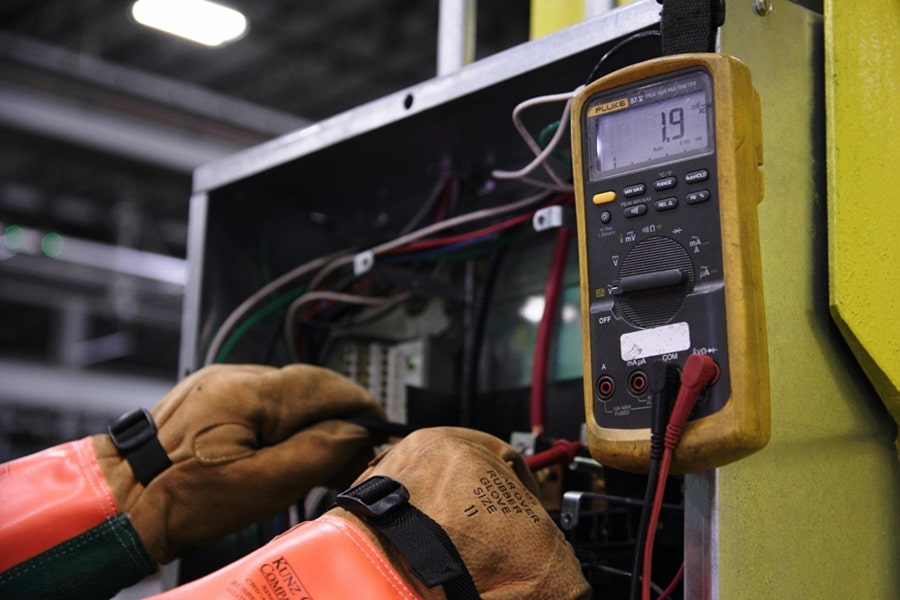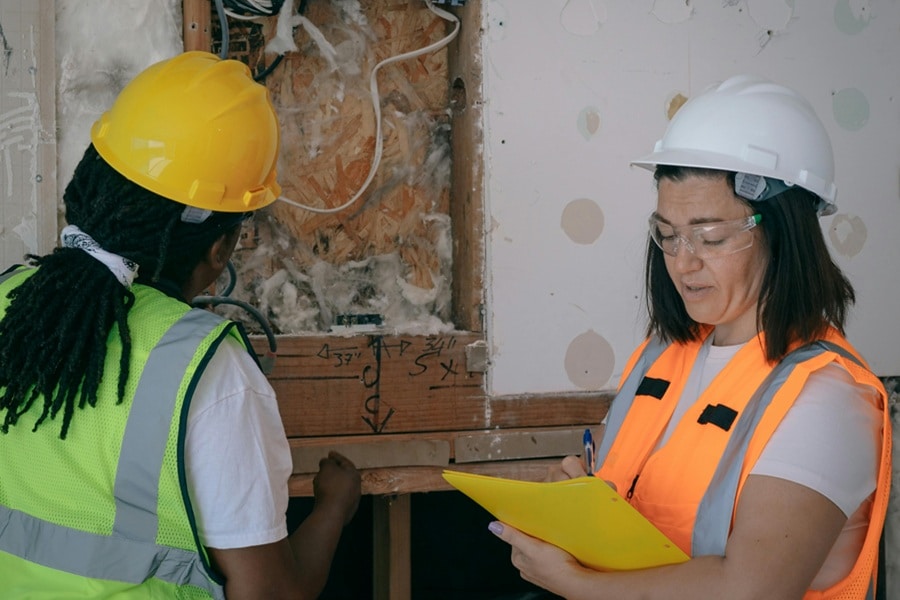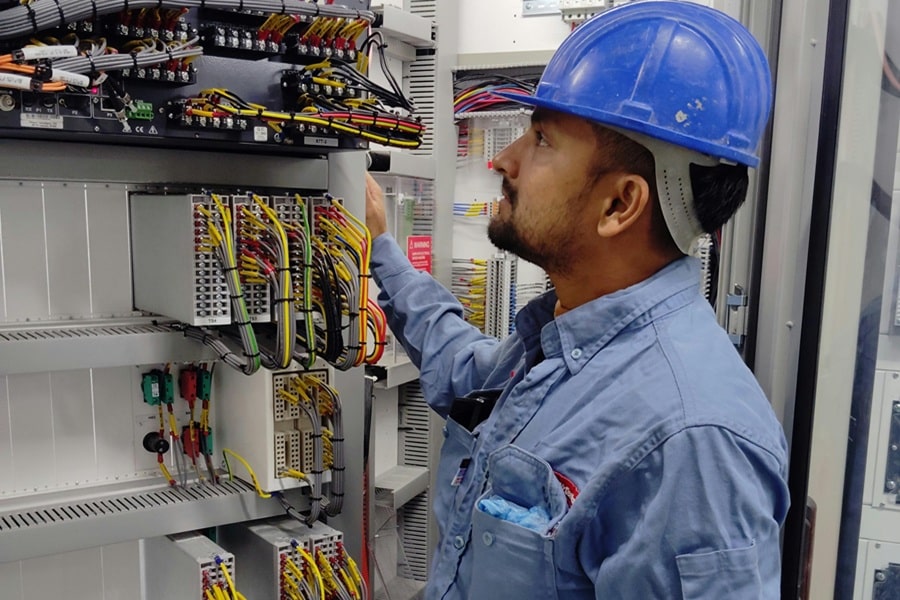We rely on electricity for just about everything at home. Modern homes and businesses are powering appliances, entertainment systems, security devices, and even devices for relaxing. However, electricity also poses some risks when not maintained. Having Swink Electric complete electrical safety inspections for your home or business helps ensure wear and tear won’t lead to something catastrophic.
What Are Electrical Safety Inspections?
Home electrical safety inspections can help prevent significant problems for homeowners that would otherwise turn everything upside down. Homes are meant to provide us and our families safety, but electrical systems could be a weak spot in that protection.
An electrical safety inspection thoroughly examines your property’s electrical systems. Swink Electric can conduct these inspections as a certified electrician to identify potential hazards. The goal is to prevent any weak points in the system to avoid fires or costly repairs.
Why Get Electrical Inspections Regularly?
It is a beautiful thing to own a home, but it comes with many responsibilities, like electrical inspections. According to the National Fire Protection Association (NFPA), electrical issues were the second leading cause of home fires in the US between 2015 and 2019. Those fires lead to roughly 420 civilian deaths, 1,370 civilian injuries, and more than $1.4 billion in property damage.
Benefits of an Electrical Inspection
- Regular electrical safety inspections could help prevent a home fire. The Consumer Product Safety Commission (CPSC) reports that approximately 70 fatalities occur yearly from electrocutions involving consumer products. Proper inspections could’ve helped in those cases.
- Homeowners also want to remain compliant with insurance companies, which may require an inspection. The National Electrical Code (NEC) is updated every three years and it’s important to ensure your home is safe and up to code.
- Outdated electrical systems could consume more energy than necessary, according to the U.S. Department of Energy. Addressing those updates could reduce energy consumption by 5-30% and save you money.
When to Schedule an Electrical Inspection
Luckily, electrical safety inspections happen as part of a home inspection before you purchase a home. This means you can use your purchase date as a starting point. From there, these inspections should happen every 3-5 years for homes that are less than 25 years old and 1-2 years for homes over 25 years old.
They should also be included during major renovations, installing new appliances, and if you simply start noticing flickering lights, circuit breaker trips, or unusual smells.
According to insurance companies, commercial properties should have electrical safety inspections every year when changing business operations, before and after major equipment installations, and when experiencing electrical issues.
What Does Swink Electric look at during an Electrical Inspection?
Swink Electric will asses the following during an inspection:
- Service Panel Assessment
- Wiring Evaluation
- Outlet and Switch Testing
- Fixture and Appliance Inspection
- Surge Protection Assessment
- Safety Device Verification
Known Hazardous Electrical Panels
Swink Electric is dedicated to ensuring clients feel safe and comfortable with any electrical work being done. However, many homes are older than 25 years old and, unfortunately, have older panels that have known defects. Homeowners can check their panels to find out if they should be upgraded due to recalls or inefficiency. Then call Swink Electric so we can take care of the panel upgrade for you.
Federal Pacific Electric (FPE) Stab-Lok Panels
Federal Pacific Electric panels were manufactured in the 1950s to 1980s but have since been labeled as unsafe due to frequent failures. In 1983, the CPSC did a two-year investigation into these panels and found that the panels failed to trip 60% of the time. You can learn more about the issues in the CPSC “Hazardous Federal Pacific Electric Stab-Lok Circuit Breakers and Panels” technical report.
Zinsco/Sylvania Panels
These panels were manufactured from the 1950s to the 1970s. They commonly appeared to be off but still conducted electricity. There were even signs of melt damage without any external signs. You can learn more about these panels in the “Safety Alert: Zinsco and Sylvania Electrical Panels ” technical bulletin.
Challenger Panels
Electrical safety inspections can help you avoid issues with older electrical panels like these. Challenger panels were manufactured from the 1980s to the 1990s. They had specific defects that led to documented hazards in both residential and commercial properties.
Those safety concerns included overheating, internal breaker failures, poor connections, fires, and failed trips. The issues were so common that this breaker was recalled in 1988. Unfortunately, there were 1.5 million units out there, and many had not been replaced. You can learn more about these issues in the “CPSC Announces Recall of Challenger Electrical Equipment.” Recall notice 88-092.
Honorable Mentions
Some panels don’t pose as big of a safety concern during electrical safety inspections. However, they are considered obsolete since homes require more energy than they once did. Those panels can get the work done for some time but eventually will not be able to handle what is thrown at them.
These panels include the Pushmatic Panels manufactured by Bulldog/ITE in the 1950s and the General Electric Circuit Breakers ™ and TE series manufactured from the 1940s to the 1970s.
Fuse Box Upgrade Considerations
These days, homes and buildings are built with electrical panels. However, there was a time when fuse boxes were the standard for electrical service panels. Fuse boxes pose numerous safety concerns in modern homes. This is simply due to our own demand for electricity; homes built before the 1960s are most likely to have fuse boxes.
Fuse boxes can handle 30-60 amps of power, but modern homes require at least 100-200 amps. Deteriorating components, lack of arc fault protection, poor wire insulation, limited short circuit protection, and no main disconnect are all reasons fuse boxes should be replaced with panels as soon as possible.
How Much Does it Cost to skip electrical inspections?
Electrical damage can range in price from $2,000-$8,000+, fire damage restoration ranges from $3,000-$30,000+, and the cost of injury or lost life is immeasurable.
Swink Electric can help prevent these risks and issues by checking your current system, showing you where the faults are, and what can be done if needed. You can rest easy knowing you have a certified electrical contractor with proper licensing, comprehensive insurance coverage, experience, and knowledge of current local codes and regulations to get the job done promptly. Contact us today to get started scheduling your next electrical safety inspection.






